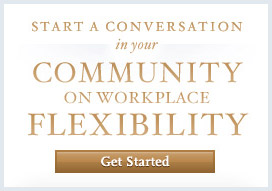About the Council on Women and Girls
On March 11, 2009, President Obama signed an Executive Order creating the White House Council on Women and Girls. In his remarks at the signing, the President underscored that the purpose of the Council is "to ensure that each of the agencies in which they're charged takes into account the needs of women and girls in the policies they draft, the programs they create, the legislation they support" and that the true purpose of our government is "to ensure that in America, all things are still possible for all people." (view the video of the signing below)
From the moment that the election results were in Americans started imagining how much progress was possible under this Administration. They imagined a government where their voices were valued. Among the strongest of these voices were women.
As this Administration began thinking about the Women’s Council, we understood that we were building on a foundation laid by others. Our Council on Women and Girls is a continuation of the work of the post-Beijing Interagency Council and the White House Office for Women's Initiatives and Outreach. Their work to bring attention to women paved the way for our efforts. We agreed with former Secretary of State Madeleine Albright who once said, in our government, "responsibility for the advancement of women is not the job of any one agency, it's the job of all of them." The White House Council on Women and Girls, has as its members the head of every federal agency and major White House office, so that everyone shares in this responsibility. The Council is chaired by Valerie Jarrett and Tina Tchen serves as the Executive Director. By placing the Council in the White House, we not only emphasize its work, but provide a central point for coordination and cooperation with the overall goals of the Administration. This structure is critical because as the President said at the Executive Order signing, the issues facing women today "are not just women's issues. When women make less than men for the same work, it hurts families who find themselves with less income, and have to work harder just to get by. When a job doesn't offer family leave, that also hurts men who want to help care for a new baby or an ailing parent. When there's no affordable child care, that hurts children who wind up in second-rate care, or spending afternoons alone in front of the television set."









